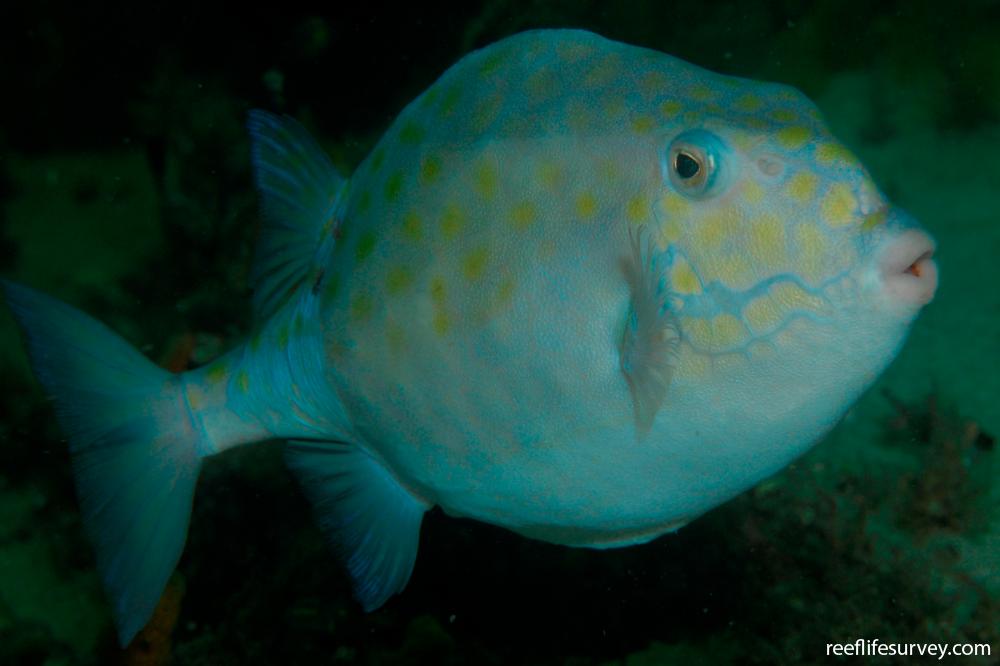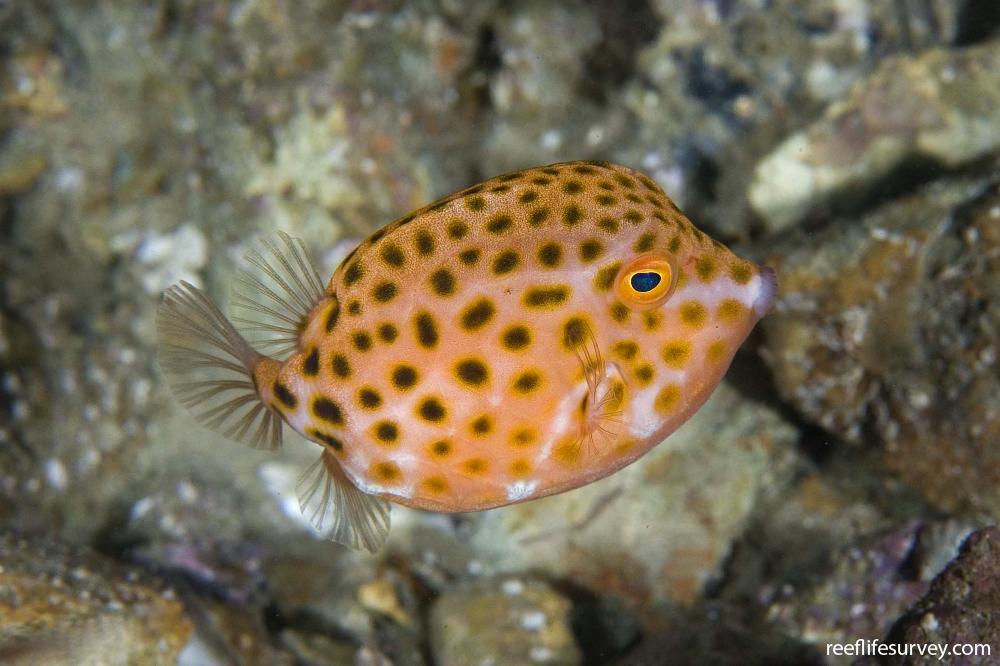Anoplocapros inermis
Eastern smooth boxfishSimilar Species
Same Genus
Distribution
Temperate Australasia
Description
Females pale yellow brown to bone white ventrally, with dark evenly spaced spots. Males lose spots becoming pale blue with yellow hue and have a large bump is also present on the snout between the mouth and eye. Small juveniles rounded body shape, orange with small spots. The eastern smooth boxfish differs slightly from its western relative - the female has lighter brown blotches on the back and the male has a blue body with golden sides.
Information
Max Size: 37 cm
Sea Temperature Range: 15.3-24.6°C
Depth: 10-300m
Habitat Generalization Index: N/A
Also referred to as the SGI (Species Generalisation Index), this describes the habitat niche breadth of the species. Species with values less than 15 are found in a relatively narrow range of reef habitat types (specialists), while those over 25 may be found on most hard substrates within their range (generalists). Learn more here.
Conservation and Rarity
IUCN Status: Least Concern
Occurrence: Common (25.2% of sites)
Occurrence describes how often the species is found on surveys within its distribution. It is calculated as the % of reef sites surveyed by RLS divers across all the ecoregions in which the species has been observed
Abundance: Few (2 per transect)
Abundance is calculated as the average number of individuals recorded per RLS transect, where present.
Edit by: GJ Edgar. 2008. Australian Marine Life. New Holland, Sydney















